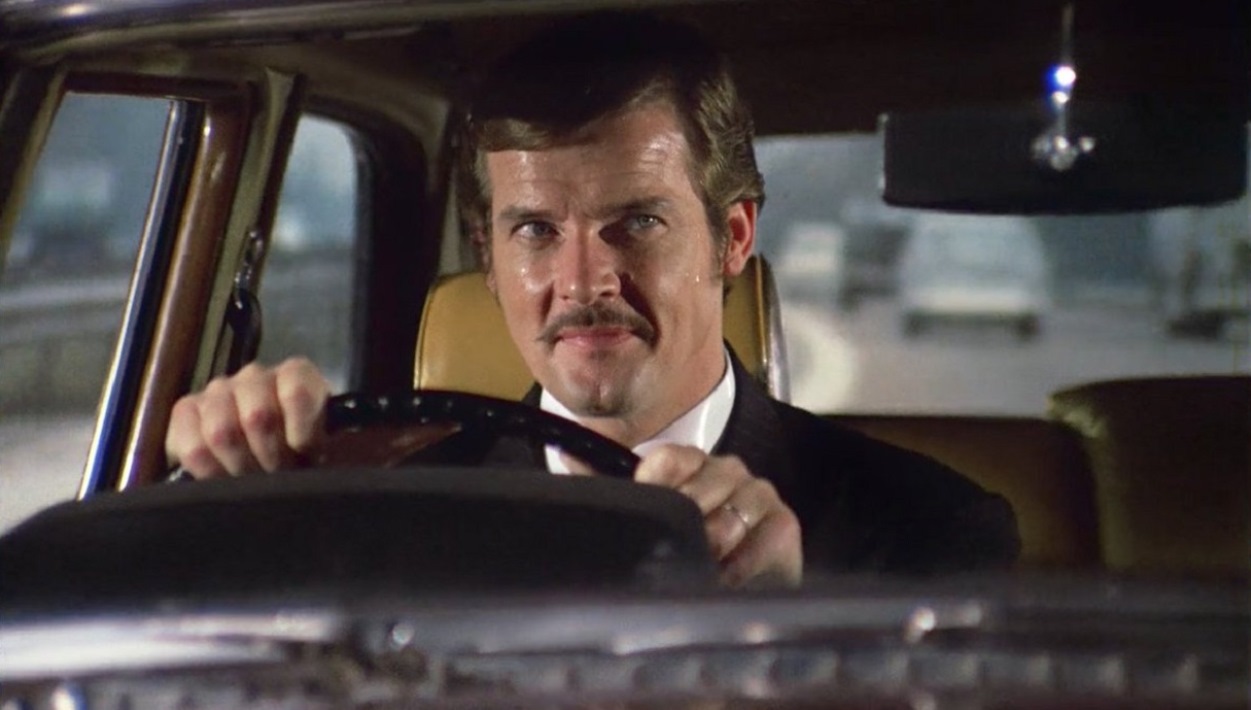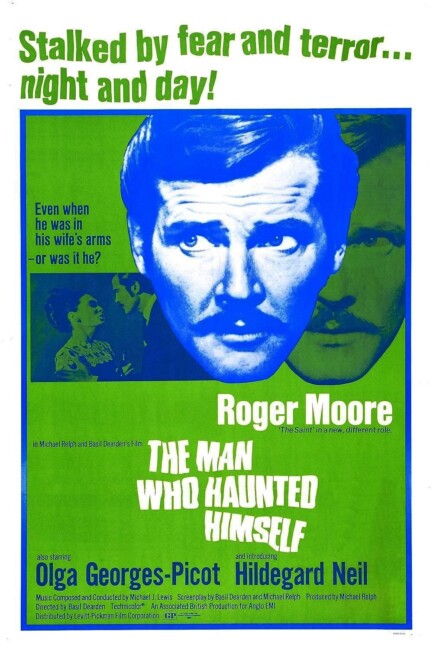Crew
Director – Basil Dearden, Screenplay – Basil Dearden & Michael Relph, Based on the Episode The Case of Mr Pelham of the tv series Alfred Hitchcock Presents Written by Anthony Armstrong (Based on His Short Story), Producer – Michael Relph, Photography – Tony Spratling, Music – Michael J. Lewis, Special Effects – Tommy Howard & Charles Staffell, Art Direction – Albert Witherick. Production Company – Excalibur Films.
Cast
Roger Moore (Harold Pelham), Hildegard Neil (Eve Pelham), Anton Rodgers (Tony Alexander), Olga Georges-Picot (Julie Anderson), John Welsh (Sir Charles Freeman), Freddie Jones (Dr Harris), Thorley Walters (Frank Bellamy), John Carson (Ashton)
Plot
Mild-mannered business executive Harold Pelham is driving home one night when he suddenly feels devilish and accelerates madly behind the wheel, only to end up crashing. He is rushed to hospital. On the operating table, the surgeons puzzle over seeing two heartbeats on the monitor, but Pelham then makes a full recovery. Soon after, Pelham finds his life being dogged by a mysterious double – people recall meeting him when he was elsewhere or the double has already done things before Pelham can. Pelham’s life becomes overturned by the double’s increasingly unscrupulous action as he finds that it has taken a mistress under his name and leaked top-secret information from his company’s boardroom to a rival business.
The Man Who Haunted Himself is a British variation on the doppelganger theme. The film was made as a theatrical vehicle for Roger Moore. At the time the film came out, Moore was caught between the two major roles he is best known for – his stint as the title character in the tv series The Saint (1962-9) and his subsequent attaining superstar status in the James Bond films beginning with Live and Let Die (1973). (In one prophetically amusing joke, here he makes a comment about espionage “not being James Bond and On Her Majesty’s Secret Service” – three years before taking up the role of Bond himself). Knowing Roger Moore mostly for his roles as James Bond and Simon Templar, it is intriguing to see him doing some serious acting instead of mugging – indeed, Moore is reported to have said that The Man Who Haunted Himself was the favourite among all the roles he has played.
The Man Who Haunted Himself was adapted from The Case of Mr Pelham (1955), an episode of the original Alfred Hitchcock Presents (1955-62) tv series. The Case of Mr Pelham was in turn based on a short story by Anthony Armstrong that was written for radio in 1940. The probable inspiration for all three was most likely the Edgar Allan Poe short story William Wilson (1839).
While not having seen the Alfred Hitchcock Presents episode or heard the radio version, the film has the feeling of being a short story that has been padded beyond its natural length. One could see The Man Who Haunted Himself working far more effectively as a half-hour tv episode, particularly for a show like The Twilight Zone (1959-63). However, the idea feels belaboured as a feature-length film where it seems to lack the snappiness required for its telling.

The slimness of the premise is not exactly helped by director Basil Dearden’s sedate pace throughout. The one section where the film does attain something vivid is during Roger Moore’s feverish pursuit of the double, as we see Moore coming closer and closer without ever actually seeing the other – at one point, he follows the double into a club and comes across the drink and still-smoking cigarette he has just abandoned. Like its lead character, The Man Who Haunted Himself is too mannered and quiet. A much better variation on the idea is the William Wilson adaptation in the Poe anthology Tales of Mystery and Imagination/Spirits of the Dead (1968). Eventually, The Man Who Haunted Himself transpires as another variant on Dr Jekyll and Mr Hyde (1886) where the film turns into a symbolic battle between Roger Moore’s starchy uptight self and his repressed carnal side.
Director Basil Dearden had come from a background in British quota quickies. In the 1960s, Dearden had turned to making spy films, although his biggest success was the historical film Khartoum (1966). Dearden’s other genre films include:– The Halfway House (1944), a tapestry of tales set around a haunted inn; the first segment of the classic horror anthology Dead of Night (1945); the space mission comedy Man in the Moon (1960); and the brainwashing thriller The Mind Benders (1962). With considerable irony, bearing in mind the topicality of the theme in the film, Dearden was killed in a car crash just after making The Man Who Haunted Himself.
Trailer here


